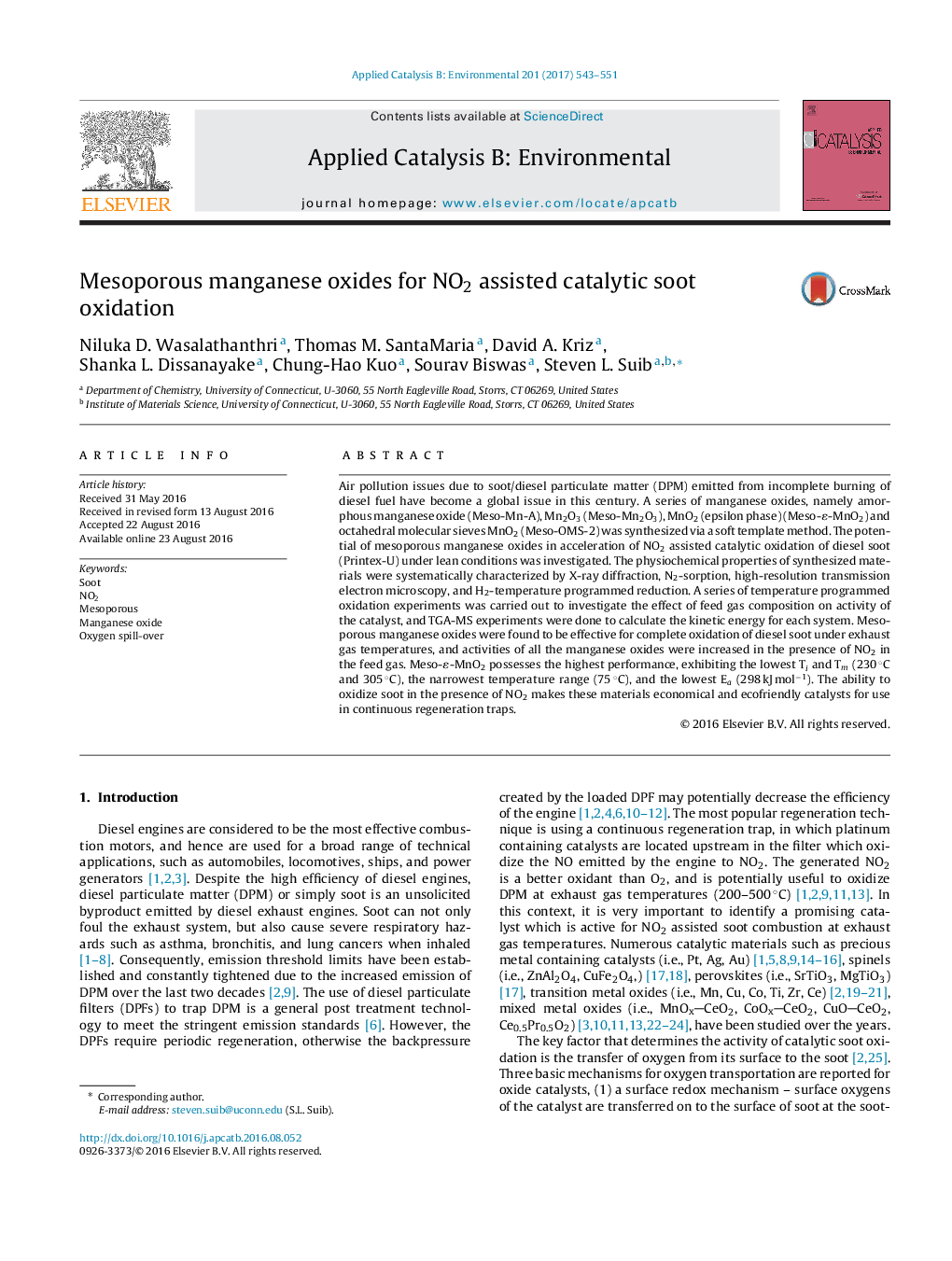| Article ID | Journal | Published Year | Pages | File Type |
|---|---|---|---|---|
| 6455061 | Applied Catalysis B: Environmental | 2017 | 9 Pages |
•Mesoporous manganese oxides synthesized by the UCT method are highly efficient in soot catalytic oxidation.•NO2 promotes the ignition of soot at lower temperatures.•Kinetic parameters are determined using TGA-MS data and Ozawa method.•Effect of NO2 on amorphous manganese oxide and mesoporous Mn2O3 are more prominent compared to the other manganese oxides tested.
Air pollution issues due to soot/diesel particulate matter (DPM) emitted from incomplete burning of diesel fuel have become a global issue in this century. A series of manganese oxides, namely amorphous manganese oxide (Meso-Mn-A), Mn2O3 (Meso-Mn2O3), MnO2 (epsilon phase) (Meso-ε-MnO2) and octahedral molecular sieves MnO2 (Meso-OMS-2) was synthesized via a soft template method. The potential of mesoporous manganese oxides in acceleration of NO2 assisted catalytic oxidation of diesel soot (Printex-U) under lean conditions was investigated. The physiochemical properties of synthesized materials were systematically characterized by X-ray diffraction, N2-sorption, high-resolution transmission electron microscopy, and H2-temperature programmed reduction. A series of temperature programmed oxidation experiments was carried out to investigate the effect of feed gas composition on activity of the catalyst, and TGA-MS experiments were done to calculate the kinetic energy for each system. Mesoporous manganese oxides were found to be effective for complete oxidation of diesel soot under exhaust gas temperatures, and activities of all the manganese oxides were increased in the presence of NO2 in the feed gas. Meso-ε-MnO2 possesses the highest performance, exhibiting the lowest Ti and Tm (230 °C and 305 °C), the narrowest temperature range (75 °C), and the lowest Ea (298 kJ mol−1). The ability to oxidize soot in the presence of NO2 makes these materials economical and ecofriendly catalysts for use in continuous regeneration traps.
Graphical abstractFigure optionsDownload full-size imageDownload high-quality image (137 K)Download as PowerPoint slide
